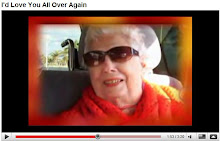Automatic Defibrillators Should Be Used More
By DENISE GRADY Published: January 3, 2008
In nearly a third of cases of sudden cardiac arrest in the hospital, the staff takes too long to respond, increasing the risk of brain damage and death, a new study finds.
Researchers estimate that the delays contribute to thousands of deaths a year in the United States. The study was based on the records of 6,789 patients at 369 hospitals whose hearts stopped because of conditions that could be reversed with an electrical shock from a defibrillator
In the real world, doctors and nurses do not always run fast enough. Expert guidelines say the shock should be given within two minutes after the heart stops, but the study found that it took longer in 30 percent of the cases.
The consequences were striking. When the defibrillation was delayed, only 22.2 percent of patients survived long enough to be discharged from the hospital, as opposed to 39.3 percent when the shock was given on time.
The study, being published Thursday in The New England Journal of Medicine, is the largest ever to look at what happened to patients with “shockable” abnormalities in heart rhythm, and to correlate their outcomes with the time it took to deliver the needed shock.
By contrast, the automatic defibrillators that have come into use in public places like airports and casinos during the last decade or so are meant to be used by laymen: trained employees or even bystanders. Connected to the chest of someone who has collapsed, the machine senses electrical activity in the heart and delivers a shock only if it is needed. These devices are designed to be essentially foolproof, making it impossible to harm someone by firing off an unnecessary shock. But so far they have not been used much in the care of hospitalized patients.
Dr. Saxon said the automatic defibrillators should be used more, along with the type of heart monitoring now given mostly to cardiac patients. Not everyone needs such monitoring, she said, but it may be in order for those who are very ill with kidney problems, diabetes or pneumonia, even if they have no history of heart problems. Their information would be transmitted to a computer network that would send out an alert if needed. In addition, she said, automatic defibrillators could be installed in every hospital room.
“You can get them for $500 on eBay,” she said. “It wouldn’t even take a nurse. You could train the cafeteria workers if you wanted to.”
Abridged=>>
















No comments:
Post a Comment